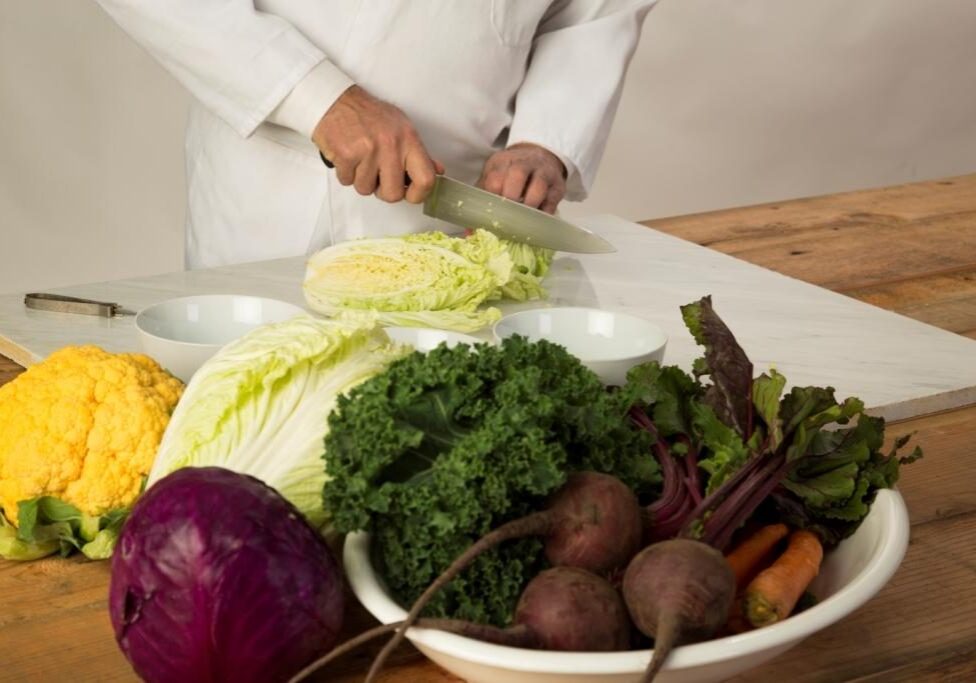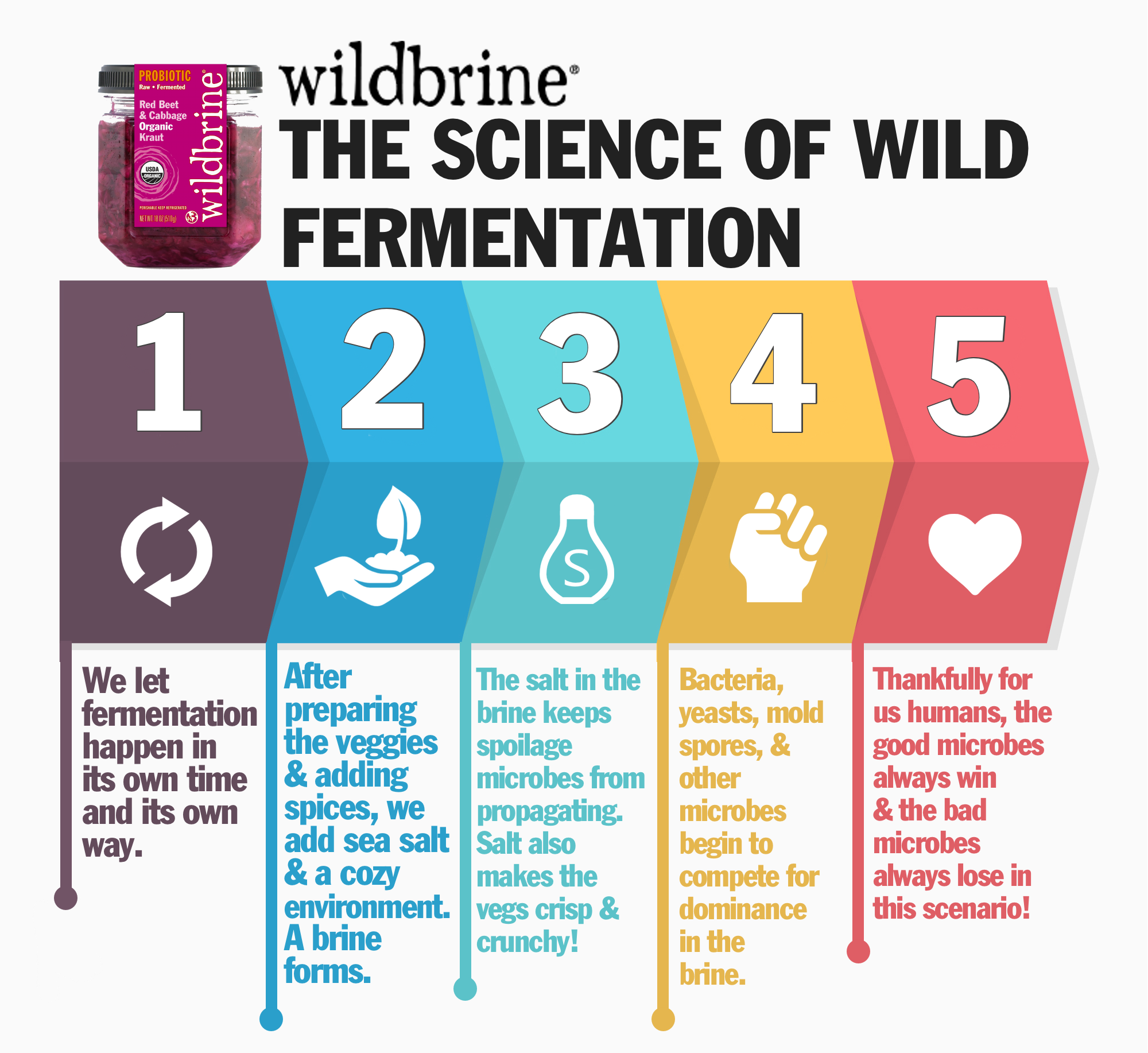Let’s start at the beginning—on the farms that grow the ingredients for our fermented products. These farms are organic, as is the produce that they grow. No agricultural chemicals are allowed. Instead of using factory-made fertilizers, organic farms fertilize their soil by composting the farms’ leftover organic matter and spreading its nutrients back to the soil. In other words, recycling.
Composting is a wild fermentation in which nature’s recyclers—the tiny specks of life we call microbes—are given a feast of fresh organic matter, which they transform into a crumbly black fertilizer that contains all the nutrients the next generation of plants will need to become healthy and bountiful. Because compost is made in the presence of air, it’s an aerobic fermentation. The microbes don’t have to be added to the organic matter. They are already here, there, and everywhere. On everything. Floating in the air. Ready to do their thing.
Nature’s mix of microbes includes thousands of species. If you’ve ever encountered compost at full fermentation, it’s actually hot from the multiplication of trillions upon trillions of these microbes working on the organic matter. Nature likes diversity. It’s her key to good health.
The products we make here at wildbrine are also made with a wild fermentation. Some commercial pickling operations inoculate their brine with a single species of microbe they think is best, but we think nature knows best. Others simply soak their products in a vinegar brine that has no probiotic microbes. But we let nature choose which microbes to use because her choices are already present.
wildbrine’s Wild Fermentation
If you peruse our website, you’ll find many choices of sauerkraut, kimchi, salsa, and blazingly good probiotic srirachas. All were made with, and by, naturally-occurring beneficial probiotic microbes that turn raw vegetables into nutritional gold and that are still in the products, ready to work their magic where it counts most—in your gut. To further enhance the enjoyment, we layer on the flavor, ’cause that’s what we do.
Before the fresh vegetables go into the brine, they are naturally covered with many different kinds of microbes. Once the veggies are covered with brine, that changes drastically. Two things start happening. First, the salt in the water keeps spoilage microbes from propagating, and the water excludes air that would promote the growth of spoilage organisms. Salt also makes the veggies crunchy and crisp, and it acts as a vitamin preservative. It also slows down the fermentation process, allowing the flavor in the vegetables to develop more fully.
Second, bacteria, yeasts, mold spores, and other microbes begin to compete for dominance in the brine. Thankfully for us humans, the good guys always win and the bad guys always lose in this scenario. And that’s because the lactobacilli (the good guys) turn carbohydrates in the vegetables into lactic acid, while others convert starch into sugar, then sugar into alcohol, which is further converted into acetic acid, the acid found in vinegar. The lactic and acetic acids give fermented vegetables their savory tang. And very importantly, they lower the pH of the brine. These good microbes thrive in acidic solutions. Spoilage and disease-causing microbes need an alkaline environment, so they die off.
Another way of looking at this fermentation process is that the lactobacilli and other good microbes that carry it out make their environment hospitable to themselves but inhospitable to any microorganisms that could spoil the vegetables for human consumption. This is why pickling vegetables under brine has been a wholesome way to preserve food for thousands of years. When you eat wild fermented foods, you are ingesting living lactobacilli and other microbes that become part of our gut microbiome, where they continue their work of dismantling our food into its component nutrients and feeding them to us through our intestinal wall.
Nature favors diversity. A diverse ecosystem, whether in a forest or in our gut, is the source of health. That’s because a healthy ecosystem is characterized by checks and balances where no one organism can cause trouble. When the gut microbiome is well supplied with a diversity of probiotic microbes, its health benefits are maximized. That’s why we do wild fermentation.
Find out more about the health benefits of fermented foods here.
About the Author: Sonoma County resident Jeff Cox is the author of 24 books, including The Essential Book of Fermentation (Avery, 2013)

